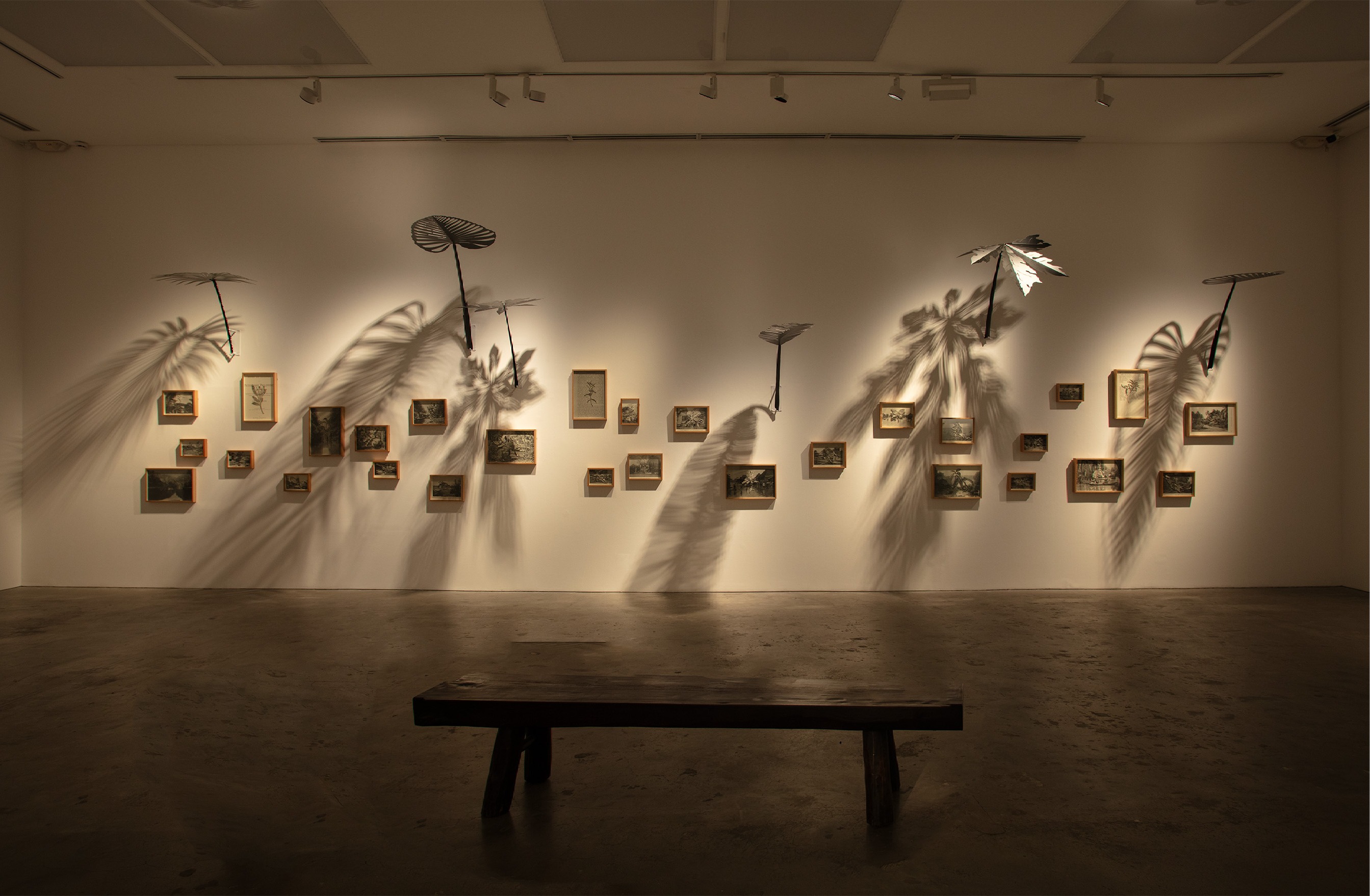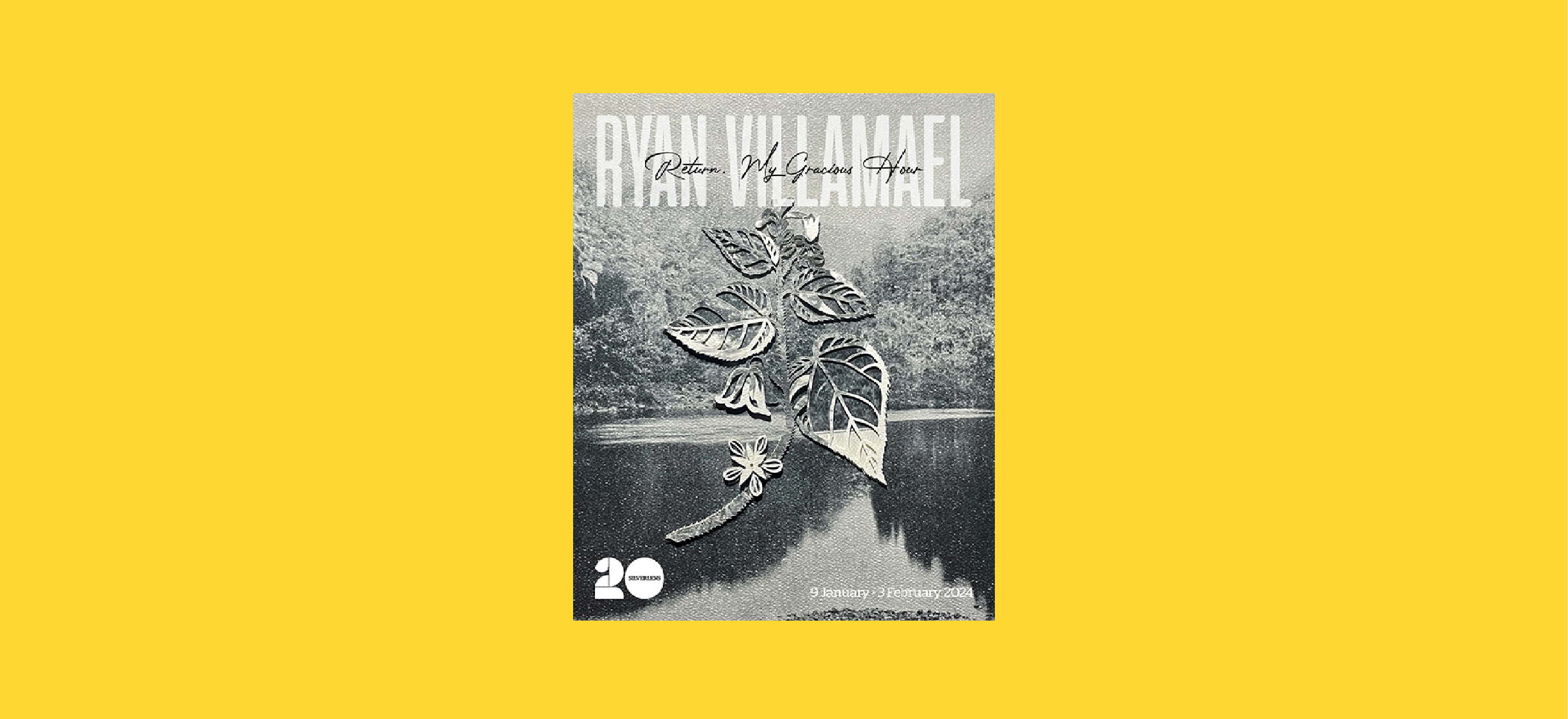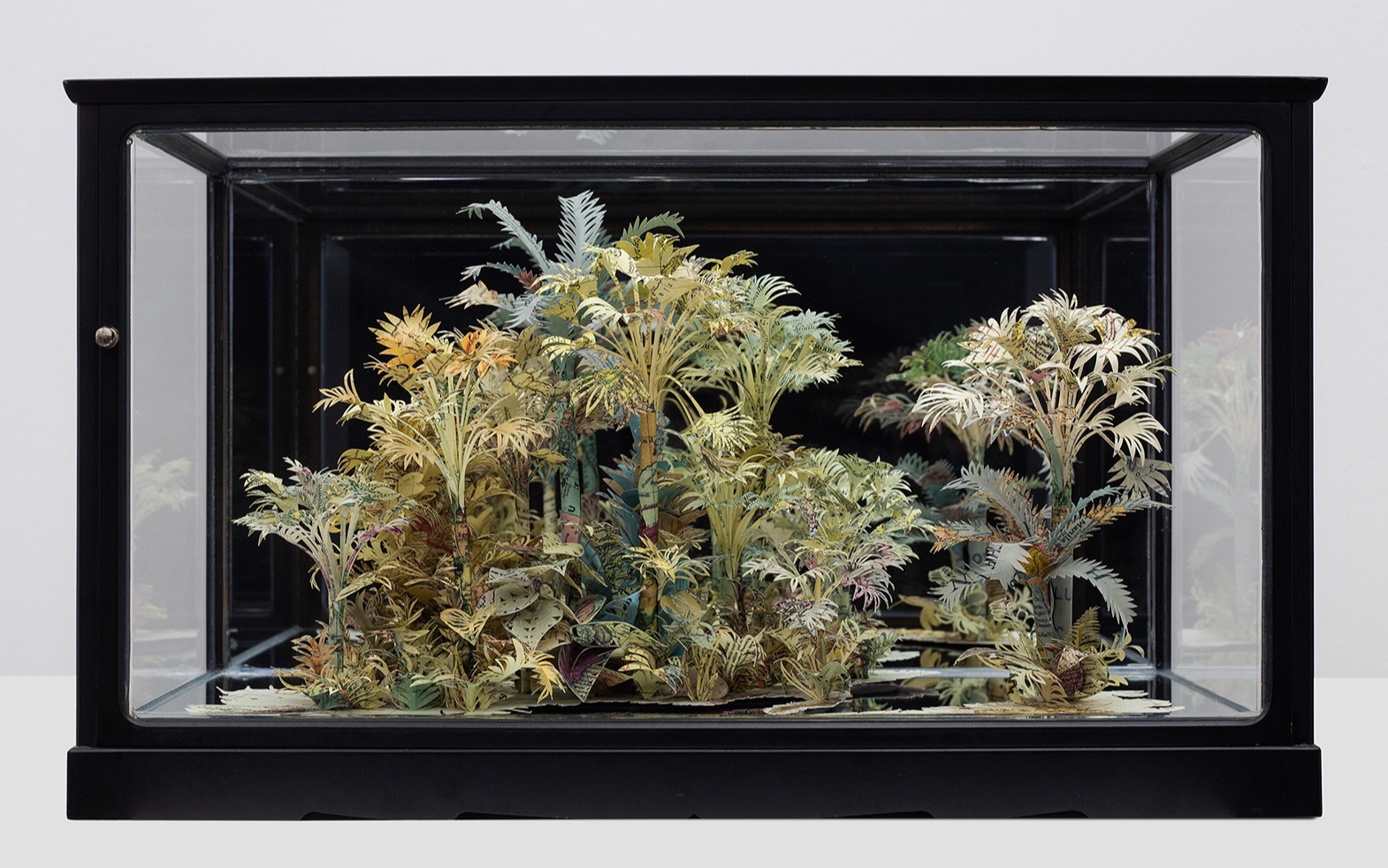
About
Silverlens is delighted to open 2024 with the solo exhibition, Return, My Gracious Hour, by Ryan Villamael.
Motivated by Rizal’s poem, “Memories of My Town,” this exhibition surveils, appropriates, and reconstitutes American-occupation archival materials, presenting them into stupendous flora: the paper cutouts of which Villamael is the foremost practitioner. Whether encased in vitrines or flourishing in the open, the works consider history not as an end, but a means—a medium—through which parallelisms between the past and the post-colonial present may be drawn.
Redolent with the plenitude of earth and the radiant, scorching heat of the tropics, the exhibition emplaces nature not as a background but as a marker, a locality, an identifying feature that structures terrains of collective identity and, by extension, shared beliefs in nationhood.
Return, My Gracious Hour, while providing fresh incarnations of previously pursued ideas, is less about nostalgia than it is about the fixity of certain longings and desires: the fevered wish to gain insight into the convolutions of the present, the irresistible summon of a hometown, and the recognition of the clash and connection between the human impulse and the prerogatives of nature.
– Carlomar Arcangel Daoana
Ryan Villamael (b. 1987), as the foremost artist working with paper as sculptural medium, has been exploring themes, tensions, and trajectories of his chosen material since his first solo exhibition, Cut Felt, a decade ago at Silverlens, which currently represents him. Beginning with a tactile and intuitive approach into one of the most delicate—and historically enduring—human inventions, which entailed cutting out shapes, details, and holes without a pre-planned design and resulted in a staggering array of abstract metamorphoses, Villamael then shifted his attention to how paper could become a locus of multiple and overlapping meanings, through which ideas on the natural world, domestic sphere, and urban landscape may be negotiated.
The artist’s main preoccupation is space—from the literal expansive flatness of paper to the metaphorical representation of a home to a more conceptual re-imagination of a city or a landscape. (Rather than through cutouts, a recent pursuit allows him to evoke topographies through the direct application of paint.) From the contained platform of a book to the vaulting hall of a museum, his works emerge, ramify, and sprawl, underscoring how the fragility of paper, through Villamael’s deliberate and thoughtful interventions, can serve as a building block to more imposing creations on a monumental scale. Possibly the most representative of this idea is his Locus Amoenus series—a breathtaking installation of creeping flora fashioned from maps—which has proliferated in different arrangements and in different locations: from Singapore to Manila to the Shiga Prefecture in Japan.
As Villamael’s process involves the surgical precision of cutting, snipping, and blading away fragments of paper, Villamael’s oeuvre is underscored by a narrative of deconstruction and loss as it simultaneously offers a terrain of shifting sentiments, an improvisatory view of a city, a reclamation of a lost paradise. By using archival materials—such as books, maps, photographs, blueprints, and letters—as base for his works, Villamael intercedes into the nature of documentation itself and interrogates the primacy of the printed matter. This enables him to reconfigure it as a site for poetic meditations on the limits and possibilities of history, on the artificial demarcation lines of geography, on the folly and glory of the human enterprise.
From this tension between surface and negative space, between construction and destruction, Villamael is able to materialize something thoroughly autobiographical and fictive from the groundwork, or paperwork, of so-called authoritative texts, made possible by the transformative labor of human hands. Observed this way, his works are a distillation of the grand themes into something intimate, familiar, and felt, as a way of making sense of the sweeping and alienating notions present within the territory of competing powers. While Villamael’s devotion to theme and technique is granular, his body of work opens up to a comprehensive version of the world, through which the contact points between the contours of self and the borders of space prompt fresh vistas where human history and destiny may be re-examined and recast.
Villamael’s works, ranging from stand-alone soft sculptures to large-scale pieces to immense installations, have gone far and wide. In 2015, his exhibition, Isles, received the Ateneo Art Award, which presented the artist studio residency grants at La Trobe University Visual Arts Center in Bendigo, Australia, Artesan Gallery in Singapore, and Liverpool Hope University in Liverpool, United Kingdom. The following year, Villamael participated in the Singapore Biennale and, in 2018, in the Biwako Biennale in Japan. He has exhibited at the Palais de Tokyo in Paris, MAIIAM Contemporary Art Museum in Chiang Mai, Para Site in Hong Kong, Mizuma Gallery and the Arts House in Singapore, ROH Projects in Jakarta, and the Metropolitan Museum in Manila. Currently, Villamael divides his time between Los Baños and Manila.
Installation Views
Works
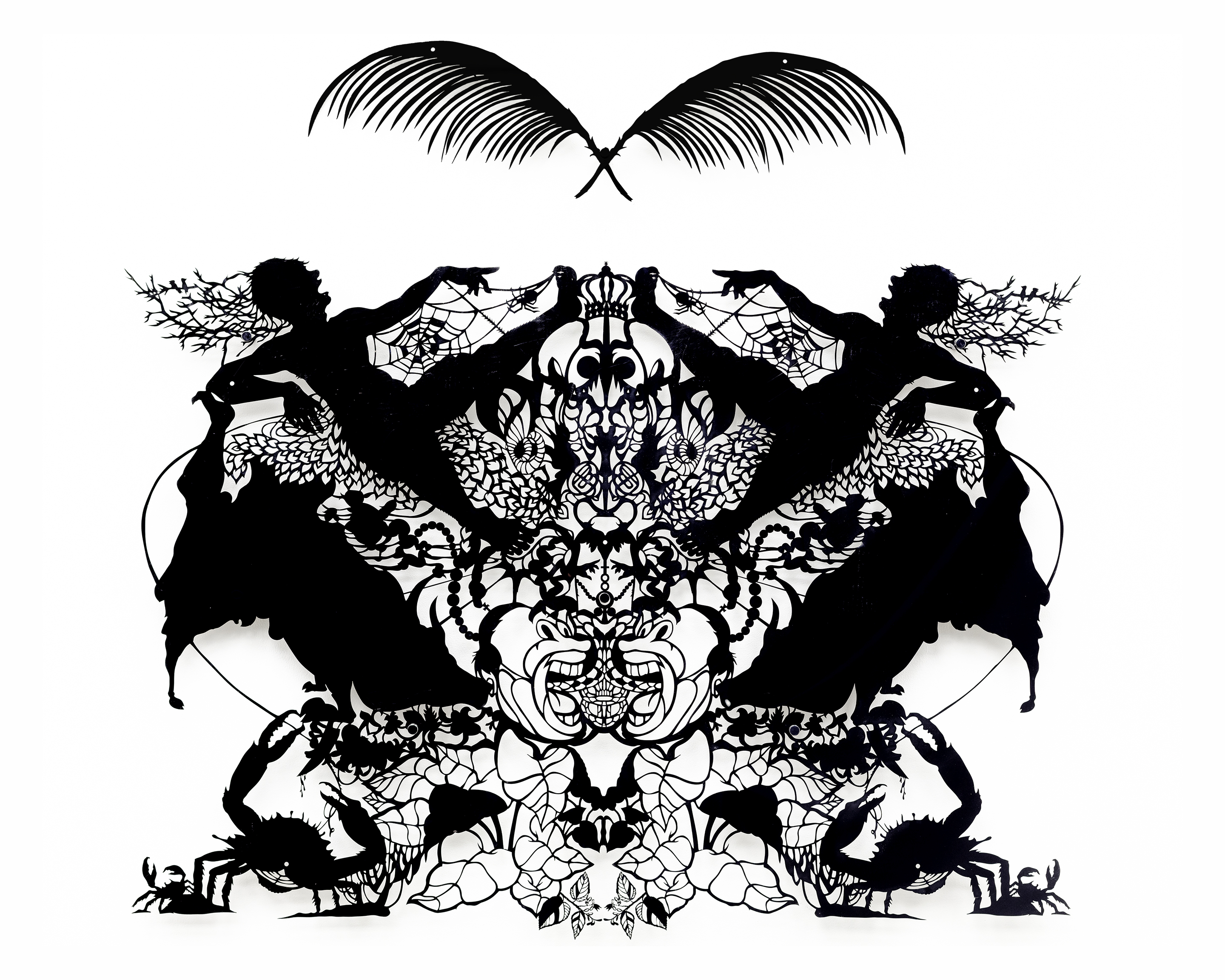
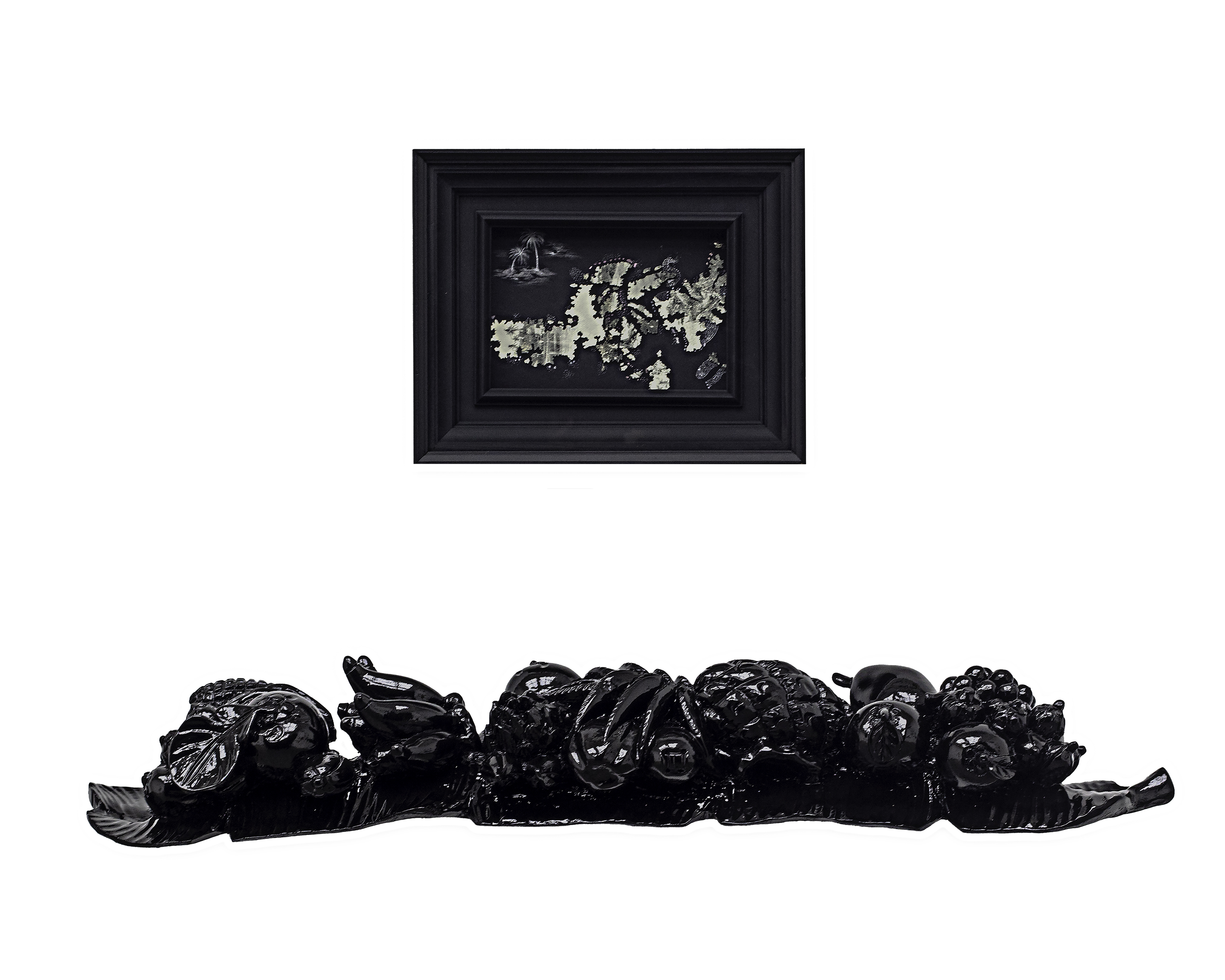
30.5h x 36.8w x 6.3d cm
wood sculpture:
6.5h x 40w x 6.5d in
16.5h x 101.6w x 16.5d cm
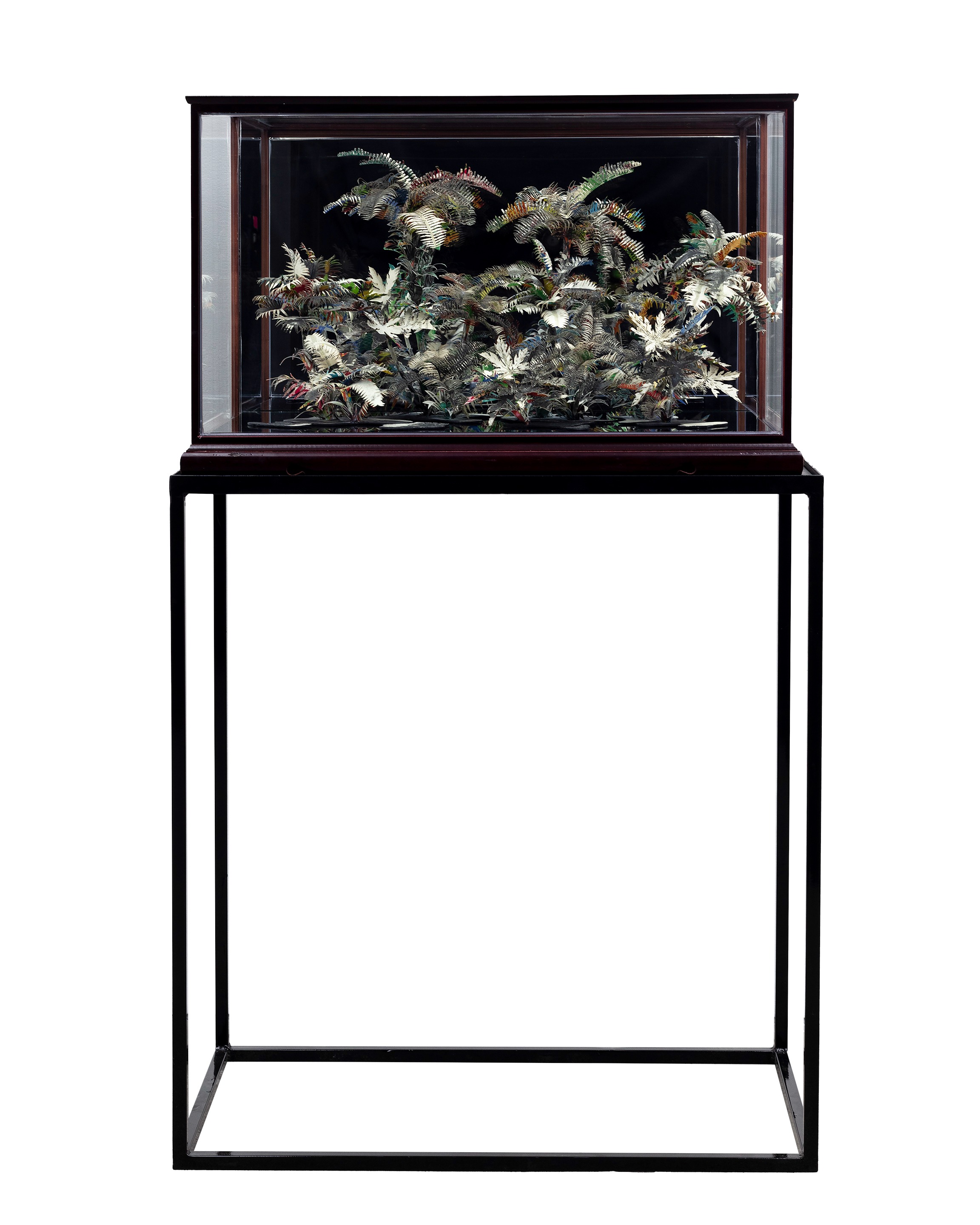
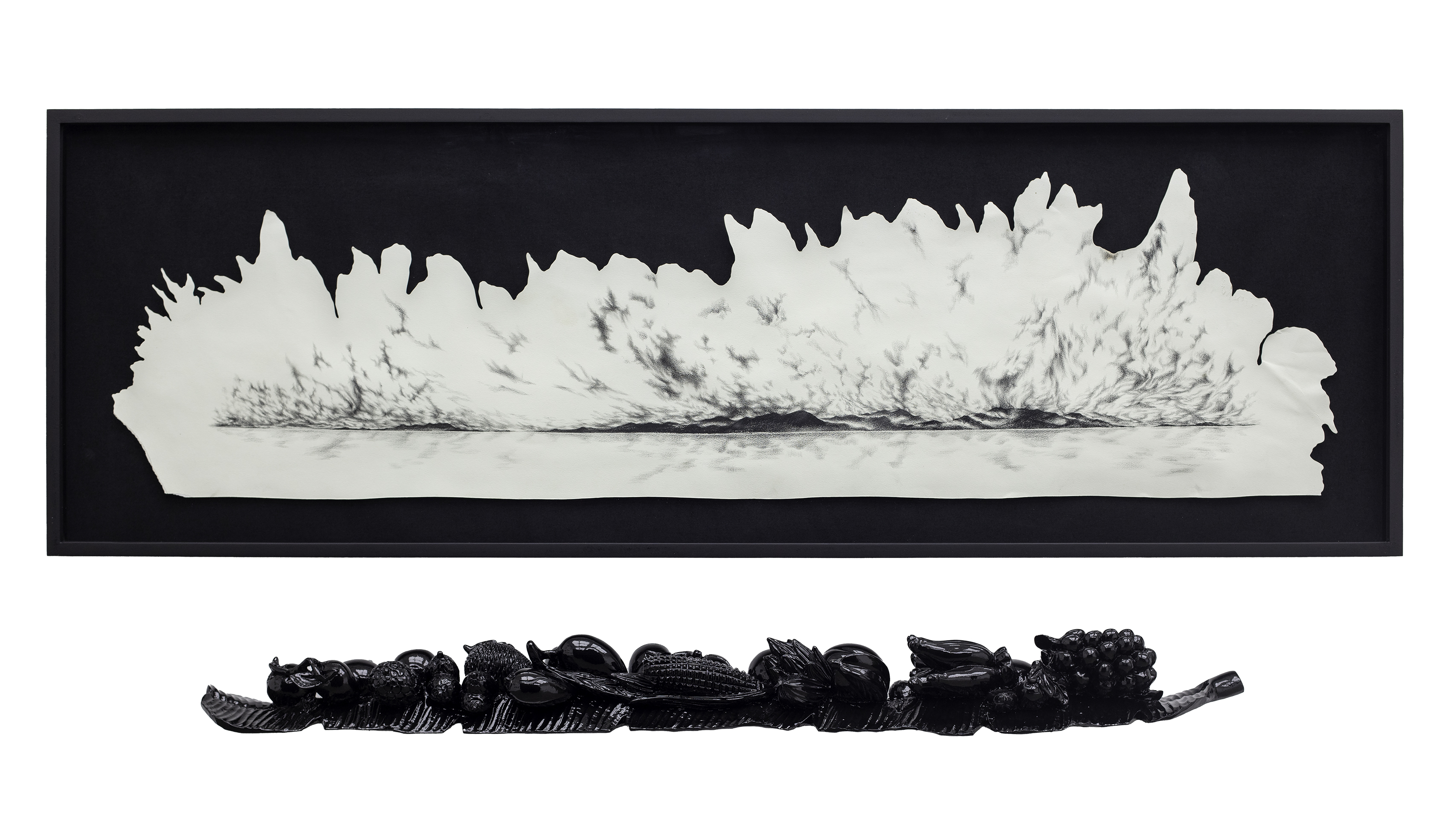
58.4h x 179.7w x 5.1d cm
wood sculpture: 3.5h x 54w x 7d in
8.9h x 137.2w x 17.8d cm
